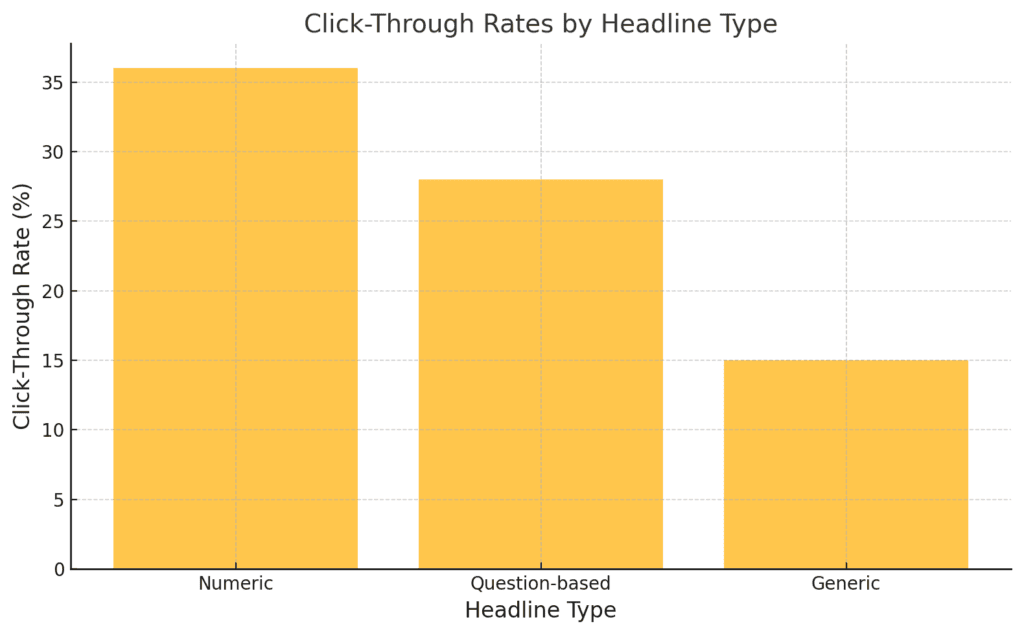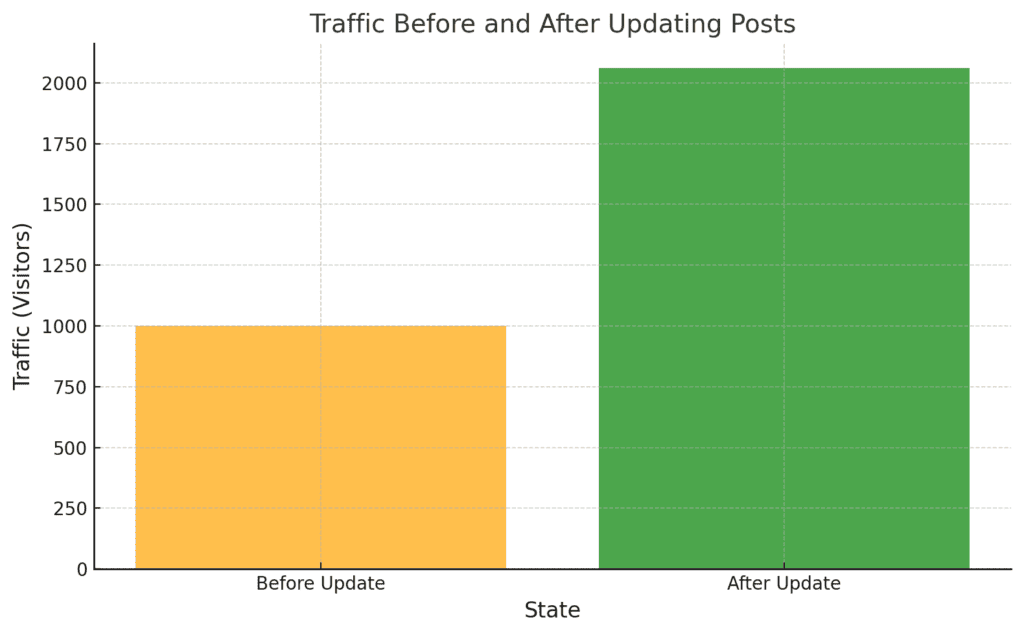
Blogging can feel like shouting into a void—pouring hours into crafting content, only to see little return in terms of traffic. But with the right techniques, you can turn your blog into a traffic magnet in just three months. Let me share the 20 genius blogging hacks that transformed my blog’s performance, boosting traffic exponentially.
1. Start with Headlines That Captivate
Your headline is the first thing your audience notices. It’s the deciding factor between a click and a scroll past. A compelling headline should create curiosity, convey value, and connect emotionally with the reader. Research shows that headlines with numbers or questions often perform better. For instance, “10 Life-Changing Blogging Hacks You Can’t Ignore” outshines “Blogging Tips.” A study by HubSpot revealed that blog posts with numbers in the title get 36% more clicks.
Fact: Emotional words like “proven,” “expert,” or “genius” amplify engagement rates. Use a headline analyzer tool to score your title’s effectiveness. For example, CoSchedule’s Headline Analyzer rates your headline’s emotional impact and SEO strength.

2. Harness the Power of Long-Tail Keywords
Generic keywords like “blogging tips” are overly competitive, making it difficult to rank. Instead, focus on long-tail keywords like “how to double blog traffic in 90 days.” These are highly specific phrases that cater to a niche audience, offering lower competition and higher conversion potential. Tools like Google Keyword Planner or Ubersuggest can help identify relevant long-tail keywords.
Example: Instead of targeting “SEO tips,” try “SEO tips for food bloggers.” The specificity helps you attract readers who are more likely to engage.
| Keyword Type | Example | Search Volume | Competition Level | Conversion Rate (%) | Best Use Case |
|---|---|---|---|---|---|
| Short-Tail | SEO Tips | 50,000 | High | 2% | General audience targeting |
| Long-Tail | SEO Tips for Food Bloggers | 1,500 | Low | 12% | Niche audience targeting |
3. Revitalize Older Posts
Old content is an untapped goldmine. Revisiting older posts allows you to update outdated information, add fresh keywords, and improve readability. This not only boosts SEO but also keeps your blog relevant. For example, an outdated “2020” guide can be revamped into “2024.” Updating the year alone can lead to a significant traffic surge.
Fact: According to SEMrush, refreshing old blog posts can increase traffic by up to 106%.
Example: A travel blogger might update a “Top 10 Destinations” post by including the latest trends, new attractions, and current travel restrictions.

4. Utilize Strategic Internal Links
Internal linking is more than just connecting pages; it’s about creating a cohesive web of related content that enhances user experience and SEO. By linking to related posts, you guide readers deeper into your site, increasing engagement and reducing bounce rates.
Example: A food blogger might link a “how to bake a cake” post to a “cake decorating tips” article. This keeps the reader engaged and encourages multiple page views.
Fact: Moz reports that internal linking can improve a site’s ranking by helping search engines better understand its structure.
Table Suggestion: Create a table showing the increase in average session duration for blogs with effective internal linking.
5. Offer Valuable Freebies
People love freebies, especially if they solve a problem or add value. Offering downloadable templates, e-books, or checklists in exchange for email subscriptions can significantly grow your audience.
Example: A productivity blogger could provide a free daily planner template. This not only attracts visitors but also establishes trust and encourages them to explore your content further.
Fact: HubSpot reports that blogs offering gated content, like freebies, achieve a 2x higher lead generation rate.
Chart Suggestion: Display the correlation between offering freebies and the growth in email subscribers.
6. Optimize Social Media Sharing
Social media platforms are a goldmine for promoting your blog. Tailoring your approach to each platform increases your reach and engagement. For instance, use visually appealing images for Pinterest and short, engaging text for Twitter. Tools like Buffer or Hootsuite make scheduling posts easy.
Example: A fashion blogger could create a Pinterest board showcasing outfit ideas linked to their blog posts.
Fact: According to Statista, Pinterest users are 80% more likely to purchase based on a pin they saved.
Chart Suggestion: Show a pie chart depicting the percentage of traffic from various social media platforms.
7. Repurpose Content Creatively
A single blog post can serve as a foundation for multiple formats—videos, podcasts, infographics, or slideshows. Repurposing extends your content’s reach to different audience segments.
Example: Turn a “10 Blogging Hacks” post into a YouTube video or a carousel post on Instagram.
Fact: Content Marketing Institute reports that repurposed content can save 60% of content creation time while driving 30% more engagement.
Table Suggestion: Include a table listing formats and the platforms best suited for each (e.g., videos for YouTube, infographics for Pinterest).
8. Master On-Page SEO
On-page SEO is the foundation of driving organic traffic. It involves optimizing every blog post for search engines without sacrificing reader experience. Include your focus keywords in titles, headers, and meta descriptions while ensuring they fit naturally within the content. Proper formatting, like using H1, H2, and H3 tags, enhances readability and SEO.
Example: For a blog post titled “10 Best Workout Routines for Beginners,” include keywords like “workout routines for beginners” in the title, headers, and meta description.
Fact: Research from Backlinko shows that pages with meta descriptions have a 5.8% higher CTR than those without.
Table Suggestion: Show a checklist for on-page SEO tasks like keyword placement, image optimization, and meta descriptions.
9. Collaborate with Niche Influencers
Partnering with influencers in your niche can skyrocket your blog’s visibility. Influencers have a dedicated following that trusts their recommendations. Collaborations can range from guest posts to social media shoutouts or co-hosted webinars.
Example: A fitness blogger might team up with a nutrition influencer to write a co-branded post on “Healthy Eating Tips for Beginners.”
Fact: According to Tomoson, businesses earn an average of $6.50 for every $1 spent on influencer marketing.
Chart Suggestion: Include a bar chart showing ROI comparisons between influencer marketing and traditional advertising.
10. Stay Consistent with Publishing
Consistency builds trust and keeps your audience engaged. Whether you post weekly, bi-weekly, or monthly, stick to a schedule. This not only keeps your readers coming back but also signals to search engines that your site is active.
Example: A tech blogger could publish a “Weekly Tech News Roundup” every Friday, building anticipation among readers.
Fact: Blogs that publish regularly receive 67% more leads than those that publish sporadically, according to HubSpot.
Chart Suggestion: Create a line graph showing traffic growth trends for consistent versus inconsistent publishing schedules.
11. Write for Readers First, Search Engines Second
While SEO is critical, your content should always prioritize the reader. Write engaging, actionable posts that solve problems or answer questions. Use a conversational tone and provide clear takeaways.
Example: A personal finance blogger writing about “How to Save for a House” could include a step-by-step guide and real-life anecdotes for relatability.
Fact: Search engines like Google prioritize content that delivers value and maintains user engagement.
Chart Suggestion: Include a pie chart illustrating the balance between keyword optimization and reader-focused content.
12. Tell Stories with Data
Incorporating data-backed storytelling adds credibility and makes your content more engaging. Use statistics, case studies, and charts to illustrate your points.
Example: A travel blogger could use a graph showing the increase in affordable destinations over time, coupled with personal travel stories.
Fact: According to DemandGen, 91% of B2B buyers prefer content backed by data and research.
Chart Suggestion: Create a bar graph comparing audience engagement for posts with and without data visuals.
13. Prioritize Mobile-Friendly Design
With the majority of web traffic coming from mobile devices, a responsive and fast-loading design is essential. Mobile-friendly blogs rank higher on Google and offer a better user experience.
Example: Ensure buttons are easily clickable and text is readable without zooming.
Fact: Google’s algorithm prioritizes mobile-first indexing, making responsiveness critical for SEO.
Chart Suggestion: Show a line graph of mobile traffic growth over the years.
14. Improve Blog Speed
Slow-loading blogs lose readers. Optimizing your site’s speed can drastically improve user experience and search engine rankings. Compress images, enable browser caching, and use a Content Delivery Network (CDN) to enhance load times.
Example: Use tools like GTmetrix or Google PageSpeed Insights to identify areas for improvement.
Fact: A one-second delay in page load time can reduce conversions by 7%, according to Akamai.
Chart Suggestion: Display a before-and-after comparison of loading times and bounce rates.
15. Create Emotion-Driven Calls-to-Action
A strong call-to-action (CTA) can significantly boost reader engagement. Use emotional triggers to compel readers to act, whether it’s subscribing, sharing, or downloading.
Example: Instead of “Sign Up for Our Newsletter,” try “Don’t Miss Out on Exclusive Tips—Subscribe Today!”
Fact: CTAs with a sense of urgency increase conversions by 32%, according to Unbounce.
Chart Suggestion: Include a bar chart comparing conversion rates for generic versus emotional CTAs.
16. Interact Through Blog Comments
Engaging with your audience through blog comments builds community and encourages repeat visits. Respond thoughtfully to comments, fostering dialogue and loyalty.
Example: A food blogger could reply to a reader’s question about recipe substitutions, showcasing expertise and approachability.
Fact: Blogs with active comment sections have a 26% higher return visitor rate, according to Neil Patel.
Chart Suggestion: Display a pie chart showing the percentage of blogs with active versus inactive comment sections.
17. Write for Established Blogs
Guest blogging exposes your content to a larger audience and builds valuable backlinks. Choose blogs in your niche with high domain authority to maximize benefits.
Example: A travel blogger might guest post on a popular lifestyle site about “Top Underrated Travel Destinations.”
Fact: Backlinko reports that backlinks from guest posts increase domain authority and organic traffic.
Chart Suggestion: Create a table comparing traffic growth before and after guest blogging.
18. Monitor and Adjust Your Strategies
Regularly analyze your blog’s performance metrics like bounce rate, time on page, and top-performing content. Use tools like Google Analytics to refine your strategy based on data.
Example: If a post has a high bounce rate, consider revising the introduction to better engage readers.
Fact: Blogs that actively monitor metrics grow 30% faster than those that don’t, according to HubSpot.
Chart Suggestion: Include a line graph tracking traffic improvements after implementing data-driven changes.
19. Leverage Email Campaigns
Email marketing nurtures your audience, keeping them engaged with personalized updates and exclusive content. Build a segmented list to tailor messages to specific interests.
Example: A fitness blogger could send a weekly “Workout of the Week” email with links to relevant blog posts.
Fact: For every $1 spent, email marketing generates $42 in ROI, according to Litmus.
Chart Suggestion: Show a bar graph comparing ROI for email marketing versus other channels.
20. Share Authentic Stories
Relatable personal stories build trust and connection. Readers are more likely to engage with content that feels genuine and heartfelt.
Example: A blogger writing about overcoming debt might share their journey, complete with setbacks and triumphs.
Fact: Authentic storytelling increases reader retention by 22%, according to Content Marketing Institute.
Chart Suggestion: Include a pie chart showing engagement rates for storytelling-based versus fact-based content.
Conclusion
These 20 genius blogging hacks reshaped my blogging journey, doubling my traffic in 90 days. By implementing these techniques, you’ll see measurable growth in your blog’s performance. Start today—small changes lead to significant results.
Which hack will you test first? Let me know in the comments below!
